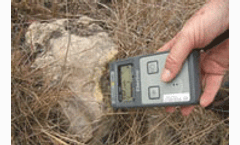Legumes Crop Articles & Analysis
9 news found
All leads are tested across a wide variety of crops, soils, environments, and stresses from nutrient and drought, to pests and diseases – a comprehensive process of multi-trait screening. ...
In spite of debate over its definition, the term ‘orphan crops’ refers to crops that are under-researched and underfunded due to their limited importance in the global market. These include cereals, legumes, vegetables, root crops, fodder crops, oil crops, fibre ...
"Biofertilizers are available in nitrogen-fixing and phosphate-solubilizing forms, and can be combined into multi-functional formulations that increase yields per acre of legume and non-legume crops," saidFrost & Sullivan Senior Industry Analyst Raghu Tantry. "Their prescribed usage also improves the quality of crops." On ...
A new study finds that using straw residue in conjunction with legume cover crops reduces leaching of nitrogen into waterways, but may lower economic return. ...
Farmers cultivating organic produce often use winter cover crops to add soil organic matter, improve nutrient cycling and suppress weeds. ...
Those that find N soil testing valuable cite: Optimising N strategy based on fitting crops to paddocks (first stage of precision N management – changing rate between paddocks) Assessing residual from failed and underperforming crops Helping develop fertiliser purchase plan (approximate quantity and when) as well as confirming nitrogen supplementation ...
Soil quality issues are being researched within two crop rotation experiments that started in 1994 at Narrabri. They compare several crop rotations that include or exclude legume phases. ...
These crop rotations include treatments with and without winter legumes (usually crimson clover and/or vetch) and with and without fertilizer nitrogen. After more than 110 years, the Old Rotation continues to document the long-term effects of crop rotation and winter legumes on cotton production in the Deep South. ...
However, CO2 levels were not the only factor that affected the protein content of crops. Both soil nitrogen levels and the ozone concentration in the atmosphere surrounding the crops had an effect on protein levels. ...









